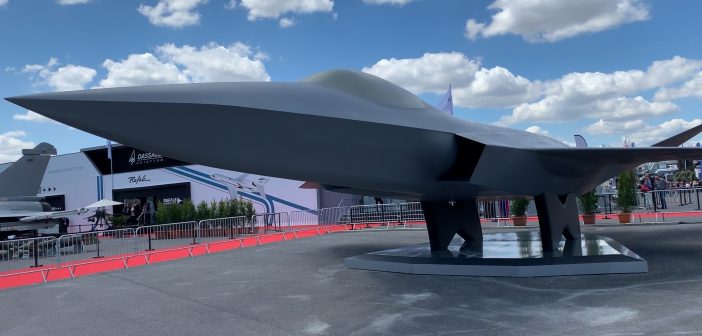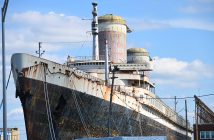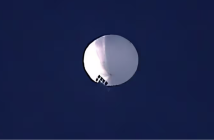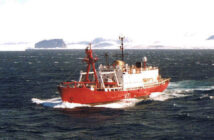- Allies are moving to preserve national combat aircraft capabilities through investment in three new stealth programs that will shape British, French, German, Italian and Turkish investment for the coming decade.
- Allied investment in stealth combined with Russian and Chinese stealth combat aircraft efforts illustrate that America’s unique and long-standing low observable edge is diminishing. That means Washington and its allies have to invest in better stealth, hypersonic and other weapons as well as connectivity technologies to ensure that US and allied 4th and 5th generation combat aircraft are seamlessly interoperable.
- It’s unclear whether the large US delegation to Paris headed by Commerce Secretary Wilbur Ross will succeed in growing US defense exports to close allies. Even Washington’s closest friends remain concerned about the Trump administration’s America First policies, willingness to impose tariffs and economic sanctions on friends and disdain for international agreements and organizations. The spread of new programs like Tempest and SCAF suggest wariness with over-dependence on the United States. And as nations spend more on defense across Europe, they are ensuring that strategic investment remains within their borders to preserve capabilities vital to future security as well as export competitiveness.
- Japan is moving ambitiously and methodically to expand its reach into international commercial and military export markets. At Le Bourget, Kawasaki’s P-1 maritime patrol aircraft as well as the C-2 cargo plane were on display, along with Mitsubishi’s SpaceJet and the Hondajet. Although each is an impressive product, they are entering highly competitive markets. The broader theme, however, is that Japan is stepping its export game, mirroring its strategic concerns about both China and the reliability of its alliance with Washington. It’s worth noting that Tokyo in November will host its first major arms export exhibition, DSEI Japan.
- Analysts continue to worry about Boeing’s outlook in the wake of the grounding of its 737 Max line after two deadly crashes. The company has yet to release its software and other 737 Max fixes, all of which will require international aviation regulatory approval before some 300 of the grounded planes can return to flight. The order by IAG for 200 Max 8 and 10 planes was a welcome shot in the arm for a program critical to Boeing Commercial Airplanes, but raises the question whether other customers will also demand the same 65 percent discount that IAG received. The missteps on 737 Max will prove painful to Boeing in reputational damage, reengineering and increased manufacturing costs, liability penalties, lost orders and weakened pricing power at a time when passenger air traffic is slowing and defense spending peaks.
- The proposed merger between United Technologies and Raytheon to create Raytheon Technologies has firms on both sides of the Atlantic considering their next steps. If approved as expected by antitrust regulators, the new company would have massive commercial and defense heft. Management views the deal as key to creating a company that has strengths in both commercial and defense to better offset cyclical downturns. Analysts, however, worry that the deal marks the peak of both civil and military spending cycles. Irrespective, leading firms are considering their next steps that in turn will reshape the industrial landscape.
On many levels, this year’s Paris Air Show was historic with the launch of two new, stealthy Western fighter programs that will dominate investment for Europe’s leading nations for the coming decade.
At Le Bourget, France, Germany and Spain launched the New Generation Fighter, the manned element of the bigger Future Combat Air System program — SCAF in French — spearheaded by France’s Dassault Aviation and Airbus that is to include closely networked manned and unmanned combat aircraft. It constitutes many years of public and private work in Europe and France in particular on new stealthy manned and unmanned aircraft, including the Neuron demonstrator that was launched in 2006.
Turkey unveiled its low observable fighter last week as well, a key messaging move as Washington prepares to block delivery of F-35 Lightning II fighters over Ankara’s decision to buy Russia’s S-400 air defense missiles. While some analysts dismissed the effort as little more than a plastic model, it’s worth bearing in mind that Turkey has been an F-35 Lightning II partner since the inception of the program and was to host the regional maintenance and support center for European jets. In the process, Turkey and its industries have gained deep insight into the program, its capabilities as well as manufacturing and support data. That information is both directly useful to Ankara in the new project or as a potential bargaining chip to get help it needs from powers like Russia and China.
Also at the show, Britain sought support for its own 2 billion pound program, Tempest, that was formally launched last year at the Farnborough International Airshow. UK officials see Tempest as key to preserving high-tech aviation skills and as potential leverage for a role in FCAS or to develop its own jet along with partners like Italy and others.
Then there is the F-35 Lightning II fighter that continues to add new orders to its book as unit and operating costs continue to decline. At a cost of $80 million a copy and dropping, it’s beginning to look like the existential threat that foreign fighter makers have feared.
From the Pentagon’s perspective, these programs are a mixed blessing.
On the one hand, the programs indicate allies interest in improving capabilities. On the other, America’s five-decade monopoly on stealth is eroding. China and Russia are fielding their own 5th generation fighters. America still has a massive lead, but its unique edge is shrinking.
That strategic shift was noted by Raytheon Chairman and CEO Tom Kennedy. During a briefing with analysts, he said Raytheon’s merger with United Technologies was necessary to create a new company with the research and development resources to develop a new hypersonic weapons to compensate for America’s diminishing stealth advantage.
Should federal regulators approve Raytheon Technologies, the new company would have far more investment heft, but all too often such deals mean greater returns for investors in the form of dividends and share buybacks than dramatically more spending on new technologies.
It’s too early to declare that America’s stealth advantage is over. The US Air Force alone invests billions of dollar annually to improve, fine-tune and identify weakness in its stealthy platforms and how to improve them in the future.
While Washington’s margin of superiority is shrinking, the volume of top-secret US investment now underway shouldn’t be underestimated. American contractors working in partnership with industry have consistently developed fundamentally game changing capabilities over the decades.
Reducing observability will remain vital. No one wants more observable air systems. The key is to continually refine US and allied stealth capabilities, develop new sensors to spot adversaries sooner and long-range, faster weapons to “outstick” adversaries while at the same time boosting connectivity to ensure wide-spread interoperability between legacy and future aircraft.
One unavoidable issue at this air show was the rift between the United States and its allies. Although the US delegation was the largest in many years to bolster American exports, the Trump administration’s America First initiatives combined with tensions over tariff threats and sanctions are propelling Europe to invest in its own programs.
Pentagon acquisition and sustainment chief Ellen Lord called on Europe to buy more American products as US executives like Lockheed Martin Aeronautics Chief Michele Evans are optimistic they will play a role in Europe’s new fighter programs, for example, to bolster connectivity. But their European counterparts like Dassault Aviation CEO Eric Trappier are unequivocal that US firms stand as good a chance of participating in FCAS as Dassault does on the Pentagon’s 6th generation combat aircraft programs, adding any connectivity work can be handled by European companies.
More broadly, the drive for local programs is propelled two factors. First, you’re spending more on defense, you want to spend as much of your taxpayers investment at home as possible. Second, growing unease that the American administration is no friend of Europe and the continent may have to defend itself without US help in a future crisis. Third, the more US officials tell Europe to buy American, the more Europeans why to buy from home. Making matters worse, American officials misrepresentation of Europe’s desire to spend more at home only makes matters worse.
Another important trend at Le Bourget was Japanese participation unseen in decades. Since the end of World War II, Japan has built sophisticated systems for its own use, often in relatively small numbers, resulting in high unit costs. Concerned about China’s rise and worried about America’s commitment to the region, Japan has upped its defense spending and cooperation with its own friends and allies.
A key part of Japan’s growing influence is Tokyo’s drive to become an export player. This year, Kawasaki had two aircraft on display at Le Bourget, the P-1 maritime patrol plane and the C-2 transport. On the commercial side there was Mitsubishi’s SpaceJet and Honda’s new small business jet. And Mitsubishi’s role in global aviation could expand if, as expected by some analysts, Bombardier sells the remainder of its commercial aviation business to the Japanese giant.
That said, Japan has yet to land major defense orders for new major platforms it’s developed. And that it’s developed are tailored to Japanese requirements and now being built in small numbers. But it’s never wise to bet against Japan. The country has a long track record of making products in global demand, whether cars, electronics, heavy equipment and manufactured goods, so it’s likely it will eventually put pressure on American and European companies in the export markets. The twin-engine C-2 cargo plane in particular may prove attractive against such four-engine planes as the Airbus’ A400M and Ilyushin’s Il-76. Development of the C-2 began in 2001 with first flight in 2010 and delivery in 2016 — but at the moment domestic production is 40 planes.
But as a sign of how serious Japan is, the plane’s international debut was at the 2017 Dubai air show and has attended major international exhibitions since.
Another key storyline in Paris was the fate of Boeing, the world’s largest aerospace and defense company. The company’s signature 737 Max jets remain grounded after two crashes that killed 346 people as Airbus introduces new programs that put enormous pressure on the company as it works to develop a new jetliner.
Boeing has been working to revamp both software and hardware to get the 737 Max back in flight, but has yet to submit its proposed changes to international regulators for approval. At this point, company executives have said they hope planes will be back in flight later this year.
Going into the show, the big question was whether any carrier would place an order for a new aircraft that was grounded after two crashes. That answer came on the eve of the show when it was announced that International Airlines Group intended to order 200 Max 8 and 10 jets. It was a welcome order and vote of confidence coming from a company led by Willie Walsh, who spent 18 years as an airline pilot before ascending the corporate ranks.
The terms of the deal, however, will ensure that Boeing continues to pay for its Max missteps. According to analysts, Boeing discounted the 200 jets by 65 percent, ensuring that future customers also demand deep discounts.
That’s another cost for Boeing on top of reengineering software and hardware fixes, fitting them to 300 jets already delivered, changing the production line, paying liabilities to airlines who have lost revenue because of grounded planes and to families who lost loved ones in the two crashes.
Then there is the reputational damage from a stream of negative news stories, plus the likelihood that both the commercial air travel boom of the past 13 years may be coming to an end just as defense spending begins to flatten as well.
Three other factors will further pressure Boeing.
First, Airbus last week dramatically changed the competitive dynamic for Boeing with the introduction of the longer-range version of its already game-changing A321neo, the A321XLR. The new single-aisle jet that can carry 250 passengers 4,500 miles that can connect the American midwest directly to major cities in Europe. The new derivative cost Airbus about $1 billion to develop and comes perilously close the New Midsize Aircraft that Boeing has been working on to generate a 757-like aircraft.
Second, high-quality reporting by the New York Times and other publications make clear Boeing made flawed decisions to get the Max to market as quickly as possible and failed to adequately adhere to the company’s own strict quality standards to deliver much-delayed 787 jetliners and KC-46A Pegasus tankers to customers.
Both 787 and KC-46 have been costly programs for the company, with both aircraft delivered to customers that have found manufacturing debris and tools. The problem is so pervasive on the Pegasus tanker that the US Air Force has twice suspended acceptance of new planes as debris and lost articles can compromise flight safety. According to Air Force acquisition chief Will Roper problems are being found despite multiple sweeps. During an interview, he said Boeing appears to have a cultural problem that will take time to correct. He maintains that Boeing appears to have put delivering airplanes to customers ahead of adhering to its own stringent quality standards.
Third, America’s trade war with China is unlikely to help Boeing on two counts. Beijing is a leading 737 customer and Chinese officials could decide to punish Washington by cutting orders as punishment. China could buy more Airbus planes in the meantime while also acquiring more Chinese made aircraft to boost its local industry. Moreover, as the trade war is a proxy for a wider great power contest between Washington and Beijing. China is unlikely to want to give Boeing the revenue with which the company can make weapons Chinese forces might face in the future.
Since the accidents, Boeing’s unapologetic tone and tendency to blame the airlines and aircrew that lost planes, suggests that senior management doesn’t believe they have done anything wrong in developing the 737 Max. The company also has been reluctant to admit production problems on any of its production lines, with a tendency to dismiss issues as minor.
At Paris, Boeing — criticized for its unapologetic tone since the accidents — made contrition a priority in every media and customer engagement.
That’s a welcome start, but it remains unclear whether Boeing management acknowledges the scope and nature of the challenges facing the company.
How quickly Boeing recovers depends on whether management believes they made missteps and are willing to hold managers accountable.
Finally, the proposed merger of United Technologies and Raytheon to create Raytheon Technologies will prompt companies across the industry to consider deals that give them more industrial, political and market heft. Some may choose to broader defense mass akin to Harris and L3 Technologies, while others may seek a bigger commercial footprint.




